2013 Hyundai Santa Fe Review – Video
Gearing up to release the third-generation Santa Fe, the decision makers at Hyundai plotted a strategy that would put the crossover on as many shopping lists as possible. With three engines and two different wheelbase models to choose from, Hyundai will offer a five-passenger Sport model as well as a 7-passenger LWB (long wheel base) Santa Fe that replaces the slow-selling Vera Cruz.
FAST FACTS
| 1. The 2013 Santa Fe is now offered in two wheelbase formats, the smaller 5-seater Santa Fe Sport and 7-passenger Santa Fe LWB. |
| 2. The Santa Fe Sport offers two four-cylinder engine options including a 190-hp 2.4L and a 264-hp turbocharged 2.0L. |
| 3. New improvements include a substantial weight reduction of 266 pounds, a Driver Selectable Steering Mode (DSSM) and a new standard driver’s knee airbag, just to name a few. |
But the differences don’t end there, with some desperately needed refreshed styling and much-reduced body weight. Reemerging onto the market as a sleeker, more functional and more efficient vehicle, the Santa Fe has shed 266 lbs from the old model, allowing five out of the six versions to weigh less than 4,000 lbs.
CHOICE: PICK YOUR OWN SANTA FE
In renewing and reviving the brand’s top-selling crossover, Hyundai engineers have empowered the new Santa Fe Sport with a four-cylinder engine lineup with a choice of either front-wheel or all-wheel drive.
Powered by the same engines found in the Sonata – with the ability to tow up to 3,500 pounds – the Santa Fe Sport models will have two options. Starting at $24,450, the base 2.4-liter direct-injection engine makes 190 horsepower and 181 lb-ft of torque. Fuel economy for the FWD is reasonable, giving consumers 22-mpg city, 33-mpg on the highway for a combined 26-mpg. The AWD model achieves a 21/28-mpg rating for 23-mpg combined
To satisfy consumers looking for more power and performance there’s a 2.0-liter turbocharged direct-injection model making 264-hp and 269 lb-ft of torque, starting at $27,700. Front-drive fuel economy is rated at 21/31-mpg for a combined 25-mpg, while AWD models get 20/27-mpg or 22-mpg combined.
The base engine is somewhat lacking in comparison to the more efficient 4-cylinder compact crossover set, though the Santa Fe is quite large. The turbo motor is competitive in power compared to rivals like the RAV4 and Chevy Equinox V6 as well as the Ford Edge turbo, and fuel economy is better too – though closer in some comparisons than others. Hyundai’s Active ECO system does, however, come standard, adding in fuel efficiency by optimizing engine and transmission control.
Early next year, mid-size SUVs like the Honda Pilot, the new Nissan Pathfinder and the Edge will be joined to battle it out for class-leading domination with the arrival of the LWB (long wheel base) Santa Fe. Debuting in January 2013, it will be powered by a 3.3-liter V6 engine with 290 horsepower and 252 lb-ft of torque, with a 19/26-mpg rating for the FWD model and 22 mpg combined.
ROADS AND MODES
Our experience driving the new Santa Fe Sport 2.0T AWD model was relaxing though rather uneventful. Twisting through the unpredictable hills of Utah during our initial test drive, there was a wishful desire from more power from the engine, and even paddle-shifters as opposed to the manumatic gear shifter. Despite the 266 lb-ft of torque rating and a significant diet, acceleration was less than stellar. Braking also felt underwhelming, leaving the feeling that even this Sport model is no lightweight.
On the plus size is the newly developed Driver Selectable Steering Mode with the three options of Normal, Comfort and Sport. Normal mode reasonably responsive and Comfort mode works best in the city, since it has a looser steering feel by 10 percent. The twists and turns of our drive route proved ideal for Sport mode, with a 10 percent more responsive steering setup. Though 10 percent might seem minimal, it makes an obvious and effective difference.
Further adding to the crossover’s performance and surefootedness is Hyundai’s first usage of Active Cornering Control AWD, which enhances the vehicle’s engine torque and braking dynamics when cornering. Furthermore, it helps to remove over- and under-steer.
FLUIDIC PRESENCE
Bold and energetic, the Santa Fe’s styling will get people asking “what is that?”, only to discover the unexpected Hyundai nameplate. The obvious identifier is the front fascia with the large signature chrome grill. At close range, you’ll also see familiar elements such as similar window arrangements of the new Acura RDX or Honda CRV, while the standard roof mounted shark-fin antenna seems to be borrowed from the BMW X3 and the rear fascia and taillights resemble those of the Audi Q5.
On its own, equipped with standard LED headlamps, standard chrome accents, piano black lower bodyside cladding, a rear spoiler and 17- to 19-inch alloy wheels, the Santa Fe makes its mark in a rapidly growing segment.
COMMUNAL EXPRESSION
As coolly impressive as the architecture is on the outside, the indoor smoothness is just as attractive with premium elements. The steering wheel, center console stack and tech items are signature Hyundai, yet everything else feels premium with the brand’s styling and aluminum accents. Further upgrades to the cabin come with Popular, Leather, Premium and Technology packages.
A notable standard feature are new cloth seats that are soil-resistant, anti-odor and anti-static, allowing for added protection on upholstery ensuring that coffee spills are no longer as regrettable.
In the Santa Fe Sport, cabin space is ample with ideal head, hip and leg room. Cargo space is near the top of its class with 35.4 cu-ft in the back and 71.5 cu-ft with the rear seats folded flat. And those who need or want more can, conveniently, opt for the LWB model.
Improved functionality comes with a sliding and reclining second row seating setup with folding setbacks that split 40/20/40. Furthermore, new storage compartments located within the floorboard of the trunk add more utility and security. Missing, however, is a power rear tailgate, however, it will be available on the upcoming Santa Fe Limited.
Optional extras include a massive panoramic sunroof, heated steering wheel, heated rear seats and manual rear side window sunshades. As for safety, a new standard driver’s knee airbag has been included with the already 6 standard airbags.
The Santa Fe’s updated tech and audio features are good, with instrumentation and controls that are easily accessible. Hyundai’s standard Blue Link system continues to offer safety, service and infotainment features. Connecting and listening is easy with a standard Bluetooth hands free phone system and AM/FM/Satellite Radio/CD/MP3 6-speaker audio system with iPod, USB and Auxiliary compatibility. There’s also a sufficiently-sized 4.3-inch touchscreen audio display with a rearview camera. Optional is a navigation and audio multimedia system with an 8-inch touchscreen, while offered in the Sport 2.0T trim is a 12-speaker Infinity Logic 7 surround sound audio system that packs a whopping 550-watts.
THE VERDICT
Much in need of a styling update, the Santa Fe gets it and much, much more. While not a stand out in any one area, Hyundai’s real coup is offering a Santa Fe that can be cross-shopped with almost every crossover on the market.
LOVE IT
- Refreshing exterior styling
- Excellent balance of cargo/interior space
- Amazing choice of engines, platforms
LEAVE IT
- Even 2.0T engine underwhelms
- Power liftgate only on upcoming Limited model
- Centre console stack is a bit oversized
More by Richard Cazeau















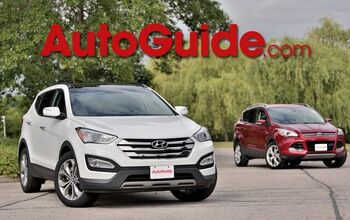

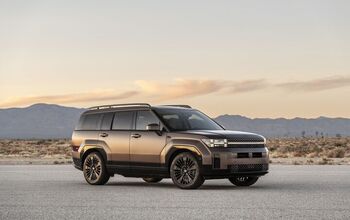
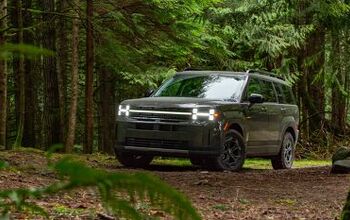



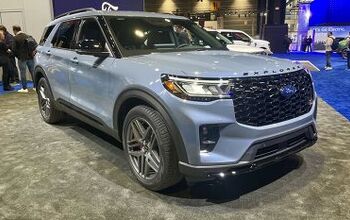
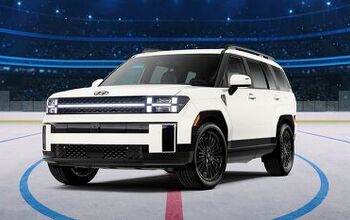
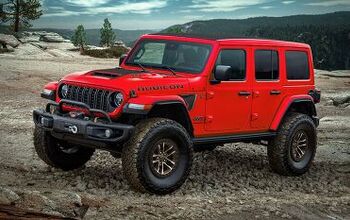
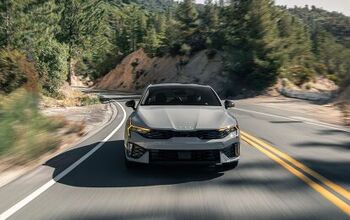
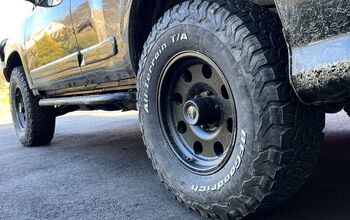
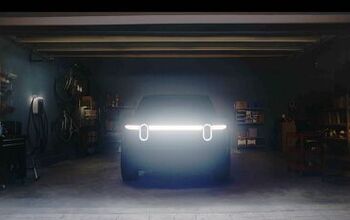
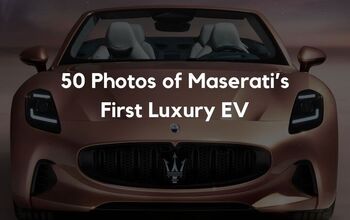
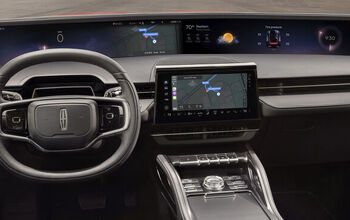

Comments
Join the conversation
Test drove this vehicle with a 2.o engine.Trans shifting for in town driving is not the best.The steering when driving on the highway is terrible when going into corners.When driving in a straight line the vehicle wanders while holding the steering wheel in a fixed position.Thumbs down for steering and trans shifting.